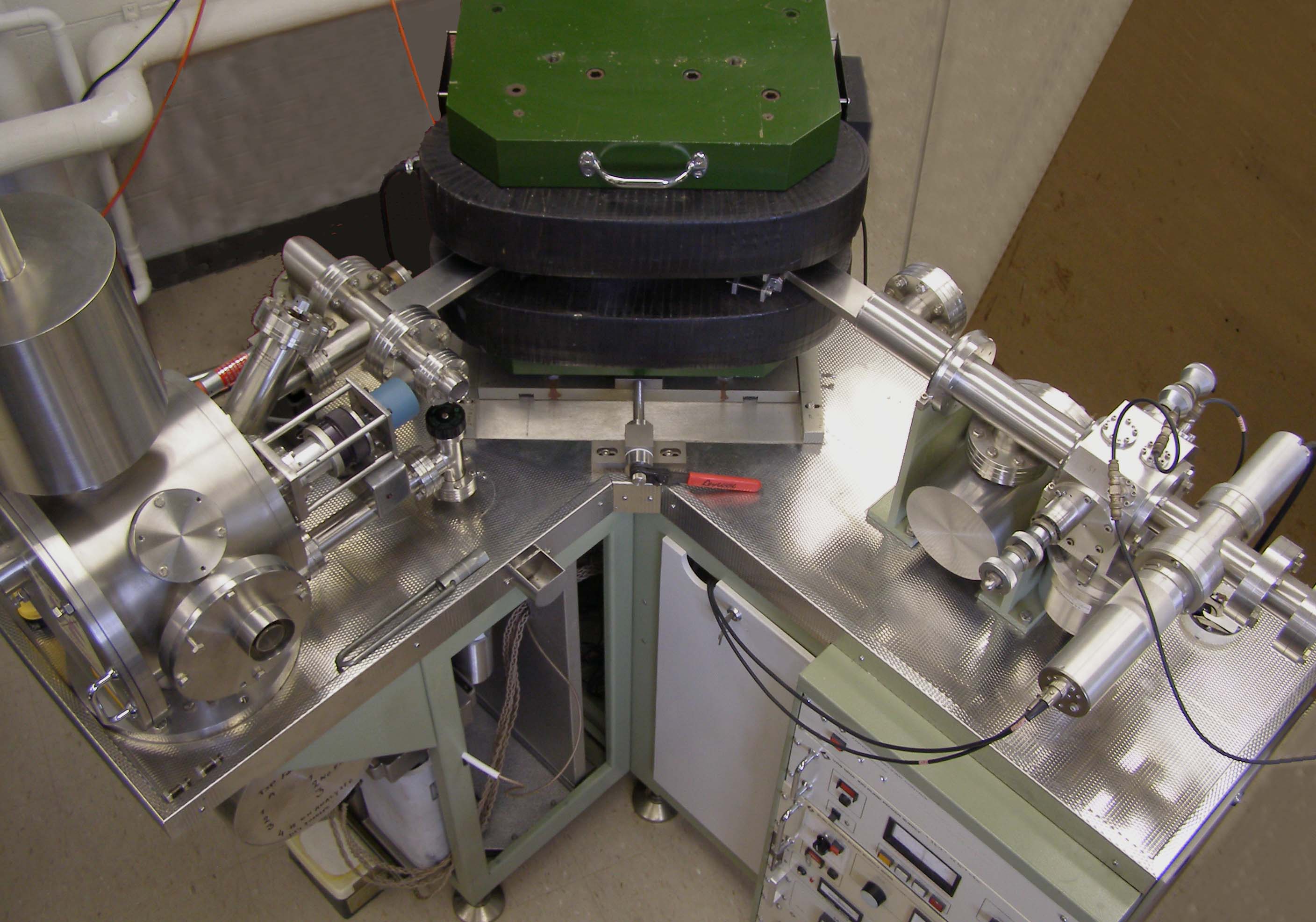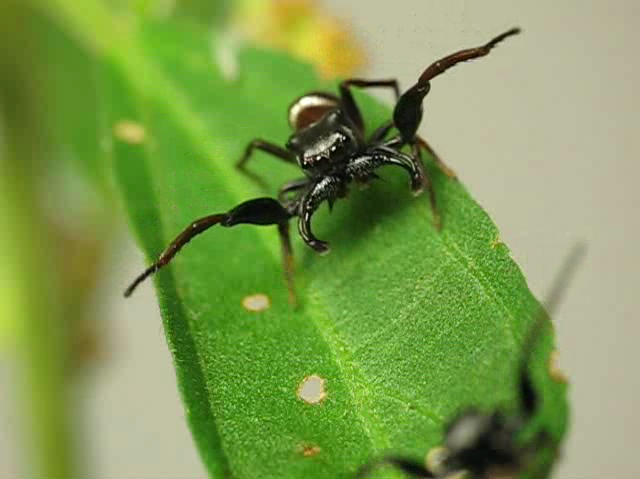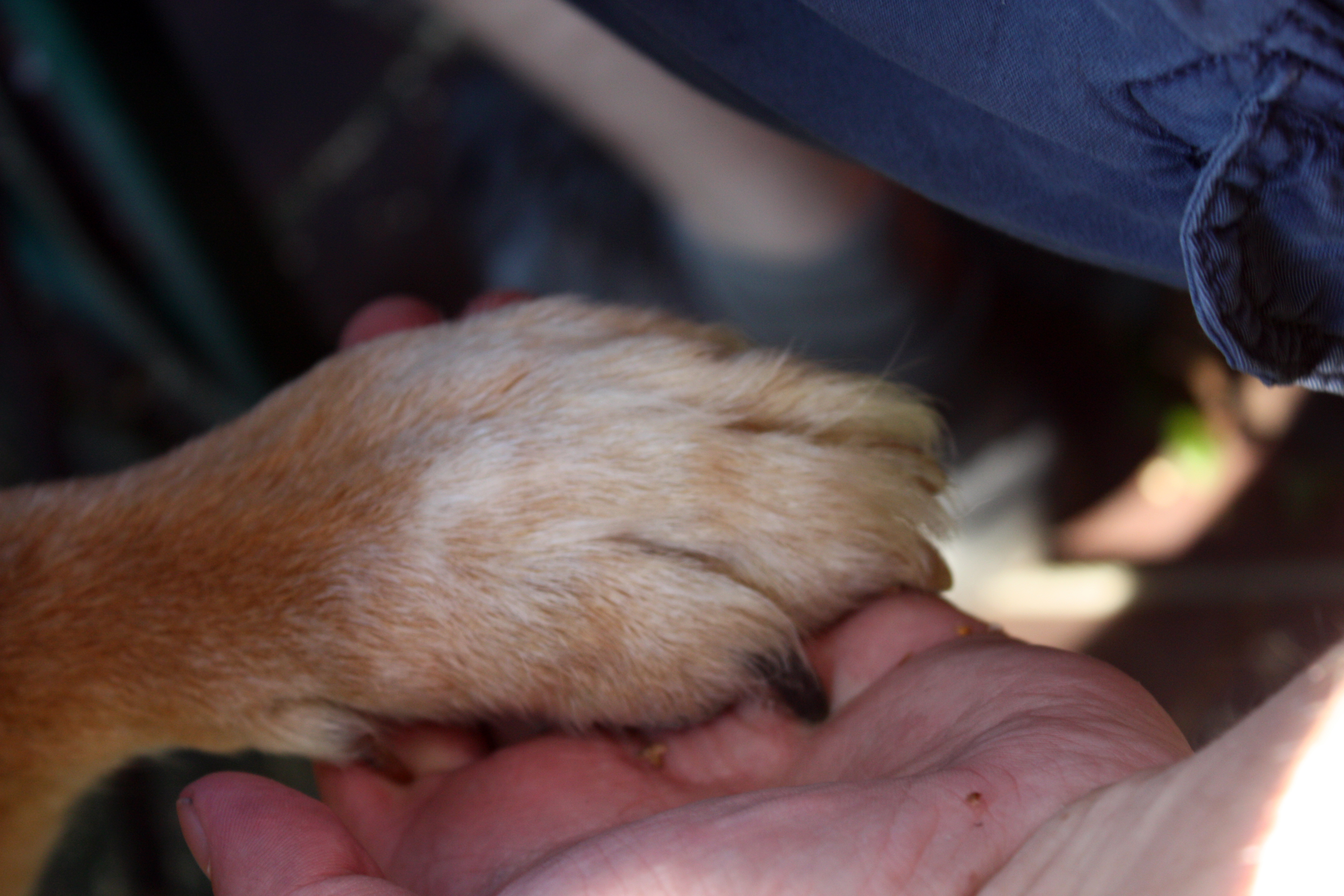|
Marginocephalians
Marginocephalia ( Latin: margin-head) is a clade of ornithischian dinosaurs that is characterized by a bony shelf or margin at the back of the skull. These fringes were likely used for display. This clade was officially defined in the ''PhyloCode'' by Daniel Madzia and colleagues in 2021 as "the smallest clade containing '' Ceratops montanus'', ''Pachycephalosaurus wyomingensis'', and ''Triceratops horridus''". There are two clades included in Marginocephalia: the thick-skulled Pachycephalosauria and the horned Ceratopsia. All members of Marginocephalia were primarily herbivores (though pachycephalosaurs are speculated to have been omnivorous). They basally used gastroliths to aid in digestion of tough plant matter until they convergently evolved tooth batteries in Neoceratopsia (or "new Ceratopsia") and Pachycephalosauria. Marginocephalia first evolved in the Jurassic Period and became more common in the Cretaceous. They are basally small facultative quadrupeds while derived member ... [...More Info...] [...Related Items...] OR: [Wikipedia] [Google] [Baidu] |
Late Jurassic
The Late Jurassic is the third Epoch (geology), epoch of the Jurassic Period, and it spans the geologic time scale, geologic time from 161.5 ± 1.0 to 143.1 ± 0.8 million years ago (Ma), which is preserved in Upper Jurassic stratum, strata.Owen 1987. In European lithostratigraphy, the name "Malm" indicates rocks of Late Jurassic age. In the past, ''Malm'' was also used to indicate the unit of geological time, but this usage is now discouraged to make a clear distinction between lithostratigraphic and geochronologic/chronostratigraphic units. Subdivisions The Late Jurassic is divided into three ages, which correspond with the three (faunal) stages of Upper Jurassic rock: Paleogeography During the Late Jurassic Epoch, Pangaea broke up into two supercontinents, Laurasia to the north, and Gondwana to the south. The result of this break-up was the emergence of the Atlantic Ocean, which initially was relatively narrow. Life forms This epoch is well known for many famous types of d ... [...More Info...] [...Related Items...] OR: [Wikipedia] [Google] [Baidu] |
Centrosaurus
''Centrosaurus'' ( ; ) is a genus of centrosaurine ceratopsian dinosaur from Campanian age of Late Cretaceous Canada. Their remains have been found in the Dinosaur Park Formation, dating from 76.5 to 75.5 million years ago. Discovery and naming The first ''Centrosaurus'' remains were discovered and named by paleontologist Lawrence Lambe in strata along the Red Deer River in Alberta. The name ''Centrosaurus'' means "pointed lizard" (from Greek ', , "point" and ', , "lizard") and refers to, the series of small hornlets placed along the margin of their frills, not the nasal horns (which were unknown when the dinosaur was named). The genus is not to be confused with the stegosaur ''Kentrosaurus'', the name of which is derived from the same Greek word. Later, vast bonebeds of ''Centrosaurus'' were found in Dinosaur Provincial Park, also in Alberta. Some of these beds extend for hundreds of meters and contain thousands of individuals of all ages and all levels of completion. Sc ... [...More Info...] [...Related Items...] OR: [Wikipedia] [Google] [Baidu] |
Bipedalism
Bipedalism is a form of terrestrial locomotion where an animal moves by means of its two rear (or lower) Limb (anatomy), limbs or legs. An animal or machine that usually moves in a bipedal manner is known as a biped , meaning 'two feet' (from Latin ''bis'' 'double' and ''pes'' 'foot'). Types of bipedal movement include walking or running (a bipedal gait) and jumping, hopping. Several groups of modern species are habitual bipeds whose normal method of locomotion is two-legged. In the Triassic period some groups of archosaurs (a group that includes crocodiles and dinosaurs) developed bipedalism; among the dinosaurs, all the early forms and many later groups were habitual or exclusive bipeds; the birds are members of a clade of exclusively bipedal dinosaurs, the theropods. Within mammals, habitual bipedalism has evolved multiple times, with the Macropodidae, macropods, Dipodomyinae, kangaroo rats and mice, springhare, Hopping mouse, hopping mice, pangolins and hominin apes (austr ... [...More Info...] [...Related Items...] OR: [Wikipedia] [Google] [Baidu] |
Protoceratops
''Protoceratops'' (; ) is a genus of small protoceratopsid dinosaurs that lived in Asia during the Late Cretaceous, around 75 to 71 million years ago. The genus ''Protoceratops'' includes two species: ''P. andrewsi'' and the larger ''P. hellenikorhinus''. The former was described in 1923 with fossils from the Mongolian Djadokhta Formation, and the latter in 2001 with fossils from the Chinese Bayan Mandahu Formation. ''Protoceratops'' was initially believed to be an ancestor of ankylosaurians and larger ceratopsians, such as ''Triceratops'' and relatives, until the discoveries of other protoceratopsids. Populations of ''P. andrewsi'' may have evolved into ''Bagaceratops rozhdestvenskyi'' through anagenesis. ''Protoceratops'' were small ceratopsians, up to long and around in body mass. While adults were largely quadrupedal, juveniles had the capacity to walk around Facultative bipedalism, bipedally if necessary. They were characterized by a proportionally large skull, short and s ... [...More Info...] [...Related Items...] OR: [Wikipedia] [Google] [Baidu] |
Stegoceras Validum
''Stegoceras'' is a genus of pachycephalosaurid (dome-headed) dinosaur that lived in what is now North America during the Late Cretaceous period, about 77.5 to 74 million years ago (mya). The first specimens from Alberta, Canada, were described in 1902, and the type species ''Stegoceras validum'' was based on these remains. The generic name means "horn roof", and the specific name means "strong". Several other species have been placed in the genus over the years, but these have since been moved to other genera or deemed junior synonyms. Currently only ''S. validum'' and ''S. novomexicanum'', named in 2011 from fossils found in New Mexico, remain. The validity of the latter species has also been debated, and it may not even belong to the genus ''Stegoceras.'' ''Stegoceras'' was a small, bipedal dinosaur about long, and weighed around . The skull was roughly triangular with a short snout, and had a thick, broad, and relatively smooth dome on the top. The back of the skull ha ... [...More Info...] [...Related Items...] OR: [Wikipedia] [Google] [Baidu] |
Sexual Dimorphism In Dinosaurs
Sexual dimorphism in dinosaurs refers to the different physical characteristics of male and female dinosaurs of the same species. This means that the male and female dinosaurs of a species may differ in size, color, shape, or they may even look like a completely different species altogether, such as in the case of the anglerfish. These differing physical characteristics can also be the deciding factor for choosing a mate or can be helpful for blending into the surrounding environment. Researching sexual dimorphism in extinct dinosaurs can be extremely difficult because suitable tissue and skeletal samples are required for testing, and most fossils and other samples have been damaged by decomposition and fossilization. Sexual dimorphism and dinosaurs Examining fossils of dinosaurs in search of sexually dimorphic characteristics requires the supply of complete and articulated skeletal and tissue remains. As terrestrial organisms, dinosaur carcasses are subject to ecological and geogra ... [...More Info...] [...Related Items...] OR: [Wikipedia] [Google] [Baidu] |
Isotope Analysis
Isotope analysis is the identification of isotopic signature, abundance of certain stable isotopes of chemical elements within organic and inorganic compounds. Isotopic analysis can be used to understand the flow of energy through a food web, to reconstruct past environmental and climatic conditions, to investigate human and animal diets, for food authentification, and a variety of other physical, geological, palaeontological and chemical processes. Stable isotope ratios are measured using mass spectrometry, which separates the different isotopes of an element on the basis of their mass-to-charge ratio. Tissues affected Isotopic oxygen is incorporated into the body primarily through ingestion at which point it is used in the formation of, for archaeological purposes, bones and teeth. The oxygen is incorporated into the hydroxylcarbonic apatite of bone and tooth enamel. Bone is continually remodelled throughout the lifetime of an individual. Although the rate of tur ... [...More Info...] [...Related Items...] OR: [Wikipedia] [Google] [Baidu] |
Tyrannosaurus
''Tyrannosaurus'' () is a genus of large theropod dinosaur. The type species ''Tyrannosaurus rex'' ( meaning 'king' in Latin), often shortened to ''T. rex'' or colloquially t-rex, is one of the best represented theropods. It lived throughout what is now western North America, on what was then an island continent known as Laramidia. ''Tyrannosaurus'' had a much wider range than other tyrannosaurids. Fossils are found in a variety of geological formations dating to the latest Campanian-Maastrichtian ages of the late Cretaceous period, 72.7 to 66 million years ago, with isolated specimens possibly indicating an earlier origin in the middle Campanian. It was the last known member of the tyrannosaurids and among the last non- avian dinosaurs to exist before the Cretaceous–Paleogene extinction event. Like other tyrannosaurids, ''Tyrannosaurus'' was a bipedal carnivore with a massive skull balanced by a long, heavy tail. Relative to its large and powerful hind limbs, ... [...More Info...] [...Related Items...] OR: [Wikipedia] [Google] [Baidu] |
Agonistic Behaviour
Agonistic behaviour is any social behaviour related to fighting, which can include aggressive behaviour, but also threats, displays, retreats, placation, and conciliation. The term "agonistic behaviour" was first defined and used by J.P. Scott and Emil Fredericson in 1951 in their paper "The Causes of Fighting in Mice and Rats" in ''Physiological Zoology.'' Agonistic behaviour is seen in many animal species because resources including food, shelter, and mates are often limited. Some forms of agonistic behaviour are between contestants who are competing for access to the same resources, such as food or mates. Other times, it involves tests of strength or threat display that make animals look large and more physically fit, a display that may allow it to gain the resource before an actual battle takes place. Although agonistic behaviour varies among species, agonistic interaction consists of three kinds of behaviours: threat, aggression, and submission. These three behaviours ar ... [...More Info...] [...Related Items...] OR: [Wikipedia] [Google] [Baidu] |
Stygimoloch
''Pachycephalosaurus'' (; meaning "thick-headed lizard", from Greek ''pachys-/'' "thickness", ''kephalon/'' "head" and ''sauros/'' "lizard") is a genus of pachycephalosaurid ornithischian dinosaur. The type species, ''P. wyomingensis'', is the only known definitive species. The possibly synonymous taxon, ''Stygimoloch'', might represent a distinct genus or a second species, ''P. spinifer''. It lived during the Maastrichtian age of the Late Cretaceous period in what is now western North America. Remains have been excavated in Montana, South Dakota, Wyoming, and Alberta. Mainly known from a single skull and a few extremely thick skull roofs (at 22 cm or 9 in thick), ''Pachycephalosaurus'' is estimated to have reached long and weighed . More complete fossils would come to be found in the following years. ''Pachycephalosaurus'' was among the last species of non-avian dinosaurs on Earth before the Cretaceous–Paleogene extinction event. The genus ''Tylosteus'' has been ... [...More Info...] [...Related Items...] OR: [Wikipedia] [Google] [Baidu] |
Interspecies Communication
Interspecies communication is communication between different species of animals, plants, or microorganisms. Although researchers have explored the topic for many years, only recently has interspecies communication been recognized as an established field of inquiry. Mutualism Cooperative interspecies communication implies sharing and understanding information between two or more species that work towards the benefit of both species ( mutualism). Since the 1970s, primatologist Sue Savage-Rumbaugh has been working with primates at Georgia State University's Language Research Center (LRC), and more recently, the Iowa Primate Learning Sanctuary. In 1985, using lexigram symbols, a keyboard and monitor, and other computer technology, Savage-Rumbaugh began her groundbreaking work with Kanzi, a male bonobo (P. paniscus). Her research has made significant contributions to a growing body of work in sociobiology studying language learning in non-human primates and exploring the role of ... [...More Info...] [...Related Items...] OR: [Wikipedia] [Google] [Baidu] |
Coronoid Process Of The Mandible
In human anatomy, the mandible's coronoid process () is a thin, triangular eminence, which is flattened from side to side and varies in shape and size. Its anterior border is convex and is continuous below with the anterior border of the ramus. Its ''posterior border'' is concave and forms the anterior boundary of the mandibular notch. The ''lateral surface'' is smooth, and affords insertion to the temporalis and masseter muscles. Its ''medial surface'' gives insertion to the temporalis, and presents a ridge which begins near the apex of the process and runs downward and forward to the inner side of the last molar tooth. Between this ridge and the anterior border is a grooved triangular area, the upper part of which gives attachment to the temporalis, the lower part to some fibers of the buccinator. Clinical significance Fractures of the mandible are common. However, coronoid process fractures are very rare. Isolated fractures of the coronoid process caused by direct trauma ... [...More Info...] [...Related Items...] OR: [Wikipedia] [Google] [Baidu] |







